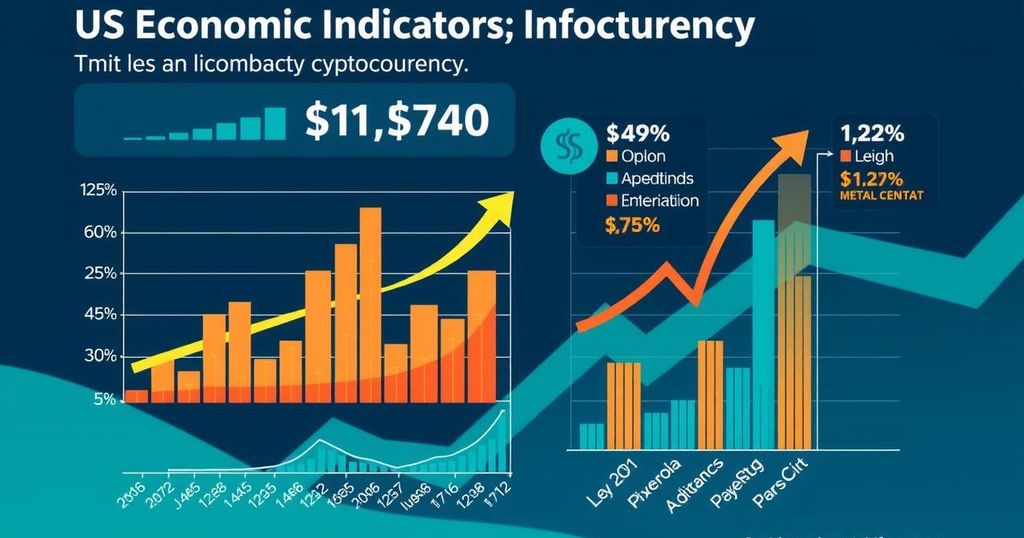Key US Economic Indicators Affecting Bitcoin This Week
This article discusses key US economic indicators with implications for Bitcoin and the crypto market, including the LEI, Services PMI, Manufacturing PMI, Initial Jobless Claims, and Consumer Sentiment. Each of these metrics reflects ongoing economic conditions that influence investor confidence and crypto valuations. The overall sentiment suggests potential downside pressure on Bitcoin amid economic uncertainties.
In light of several US economic indicators being published this week, their implications for Bitcoin and the broader crypto market are noteworthy. Recent macroeconomic data have significantly impacted cryptocurrency market sentiments, requiring traders and investors to adapt their strategies accordingly to leverage these developments.
Among the key indicators, the Conference Board Leading Economic Index (LEI) for March was anticipated to show a 0.5% decline, as reported for February. The most recent figures indicated a 0.3% drop, a trend influenced by weak consumer expectations and declining manufacturing orders. While the overall picture suggested a slowdown, a projected GDP growth of 2.0% for 2025 may provide some encouragement, though ongoing uncertainties around tariffs continue to pose risks, potentially dampening Bitcoin’s appeal in favour of safer investments.
The S&P Global US Services PMI for March demonstrated a rise to 54.4 from February’s 51.0, indicating robust expansion in the services sector and strong consumer demand. This uptick can strengthen the US dollar, which might diminish Bitcoin’s attractiveness, as past cycles show a strong dollar correlates with lower Bitcoin demand. However, should the equity markets rally alongside strong services data, Bitcoin could benefit indirectly.
Contrarily, the S&P Global US Manufacturing PMI for March revealed a decrease to 50.2, indicating stagnation. Coupled with the ISM Manufacturing PMI falling to 49.0, this data points to increased economic challenges, exacerbated by high interest rates and international demand sluggishness. This weak manufacturing output may indicate a declining risk appetite, leading to potentially negative impacts on Bitcoin’s price, particularly if the correlation with equity markets persists.
Initial Jobless Claims recorded a decrease to 215,000, a slight improvement that still highlights a stressed labour market. Although this trend might suggest a stabilisation in layoffs, ongoing pressures from high interest rates and tariff uncertainties continue to erode employer confidence. The decline in claims could alleviate concerns regarding an imminent economic downturn, which may ultimately be beneficial for Bitcoin if liquidity increases.
Consumer Sentiment, as per the University of Michigan’s index, remained subdued at 50.8, slightly down from February, impacted by inflation fears and tariff anxieties. This depressed sentiment signals a lack of confidence in retail investment, which is significant for Bitcoin’s market as it relies heavily on retail engagement. Should sentiment remain pessimistic, the pressures on Bitcoin could intensify, making a recovery unlikely under the current conditions.




Post Comment